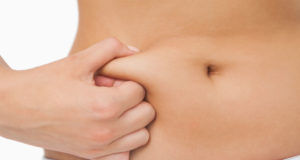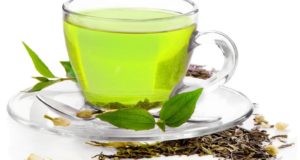Seaweed has been used all over the world for thousands of years and is a type of algae. Algae came to existence about three and a half billion years ago and is in 75% of the air we breath.
When you think of seaweed in North America, you usually think about people from the Far East. Well, people from Japan have used seaweed since the beginning of time. Records show that for over 2000 years seaweed has been used as a supportive food in the Japanese diet. It is reported that at least six types of seaweeds were used in 800 A.D in everyday cooking in Japan. In 794, Japanese people used seaweed to make nori, which is a dried sheet of seaweed, which we see in sushi.
Some research also suggests that seaweed has been used since 2700 BC in China. In 600 BC, Sze Teu wrote that in China that seaweed was made for special guests or kings. In 300 BC, Chi Han wrote a book about seaweed. In China, kelp was used in the 5th century for food. In China, Laminara japonica(a specific species of seaweed) was imported from Japan in the 5th century.
In Europe, Mediterranean seaweeds were used as medicine in Greek and Roman times. Greeks even used seaweed to feed animals as early as 100 BC. In the Mediterranean, some red algae were used as sources of dying agents and as a medicine to treat parasitic worms since pre-Christian times.
For thousands of years and in many cultures, seaweed has been used for food and fertilizer. In Ireland, people started collecting algae in 1200 AD. Farmers have used seaweed for hundreds of years as mulch for soil, and even today there is a large seaweed industry in both Scotland and Ireland. In Ireland, Palmaria, a red algae is, known under a variety of Gaelic and English names: duileasc, Creathnach, dulse and dillisk, expressing clearly the long usage and perhaps also the great variation in habit and habitat of this species. There are very early records of the use of Palmaria not only in Ireland but also Iceland. One of the oldest recorded writings in Iceland, dating back to 961 BC, included detailed regulations about coastal property rights to be respected in the collection of sea vegetables. Palmaria is a well-known snack food and is an important source of fiber to the Icelandic people.
The ancient Hawaiians grew kelp gardens. They used 60-70 species of seaweed for food, medicine, ceremonies and even for their leis. In Hawaii, the story is that Hawaiians believe that a shark-man was killed and the ashes turned into a reddish seaweed that was deadly. The Hawaiians smeared it on their spears to make the spears fatal. We have done some extensive research on seaweed and we are not aware of any type that would be fatal. The Tongans have a long history of use with Limu Moui, which a brown sea plant. The Tongans believed Limu Moui would give them longevity and overall good health. For a long time, the Tongans were the only people who knew the secret of Limu Moui. The Tongans consumed Limu Moui for 3,000 years and was a staple in their diet. When Captain Cook visited Tonga in 1777, the Tongans offered him Limu Moui to restore his strength and energy.
Sea Vegetables and Cancer
As stated above, sea vegetables have been used for centuries in Japanese and Chinese medicine for treatment of cancer. Recent scientific research has started to verify this traditional usage. For example, a study in 1995 demonstrated anti-tumor activity in kelp (Ascophyllum and Fucus ) against leukemia. Certain compounds in kombu (Laminaria japonica) and wakame (Undaria pinnatifida) have been shown to have anti-mutagenic activity. Fucons (sulfated polysaccharides) extracted from brownsea veggies – the “kelps” – have been shown to inhibit cell growth, which means they may be able to inhibit the growth of cancer cells. In fact, a Japanese investigation duplicated a traditional Chinese medicinal formula using kelp (Laminaria species) and achieved reduction in size and number of tumors in laboratory experiments.Dr. Jane Teas, one of the top researches of seaweed in the world, and affiliated with the Interdisciplinary Programs and Health at the Harvard School of Public Health, published a paper in 1981 which documented reasons why the consumption of seaweed, particularly the kelps, might be a factor in the lower rate of breast cancer found in postmenopausal women in Japan. Dr. Teas recently published a double blind trial with 15 postmenopausal women, which concluded that consumption of seaweed had a positive effect against the prevention of breast cancer.
A study presented at the American Association for Cancer Research International Conference on Frontiers in Basic Cancer Research has found a mechanism of action by which fucoidan(referenced in issue 12), a sulfated polysaccaride extracted from brown seaweeds, exerts chemopreventive effects. Fucoidan has been reported to exhibit anticancer activities in numerous other in-vitro and in vivo studies. In this study, fucoidan from Laminaria cichorioides, a type of brown algae, was shown to inhibit neoplastic cell transformation induced by epidermal growth factor or 12-Otetradecanoylphorbol-13-acetate (a tumor promoter), but had less cytotoxic effect on mouse epidermal cells. Extensive testing demonstrated that fucoidan directly interacted with epidermal growth factor, apparently preventing the binding of epidermal growth factor to its cellsurface receptor. This could explain fucoidan’s anticarcinogenic effect. Fucoidan is an amazing compound of seaweed and has been extensively studied; this is just one study. A basic search on PubMed as of the date of this publication shows 854 studies on fucoidan. Dr. Ryan Drum, Ph.D. who got his Ph.D in Phycology (the study of plants), states that fucoidan, “is … extremely anti-proliferative against cancer cells. It also interferes with every stage of viral attack: cell attachment, cell penetration, and intracellular virion production. “Dr. Ryan also stated: “all human cells studied are found to have receptor sites for Fucose, the end-group sugar on fucoidan.”.
Sea Vegetables as Anti-Viral Agents
Doctor Drum indicates several elements in sea veggies that make plausible their traditional use as antivirals. Fucoidan, has not only shown to have anti-cancer benefits but has also been shown to interfere with every stage of viral attack: cell attachment, cell penetration, and viral intracellular penetration.
Doctor Drum also notes that certain polysaccharides or glycoproteins from red seaweeds (dulse and laver are red seaweeds) have been successfully used in treating genital herpes and Herpes Zosters also known as shingles. He also notes in the seaweed literature that carrageenan derivatives have expressed strong antiviral activity.
 Natural Knowledge 24/7 Educate yourself with nutrition, health and fitness knowledge.
Natural Knowledge 24/7 Educate yourself with nutrition, health and fitness knowledge.





